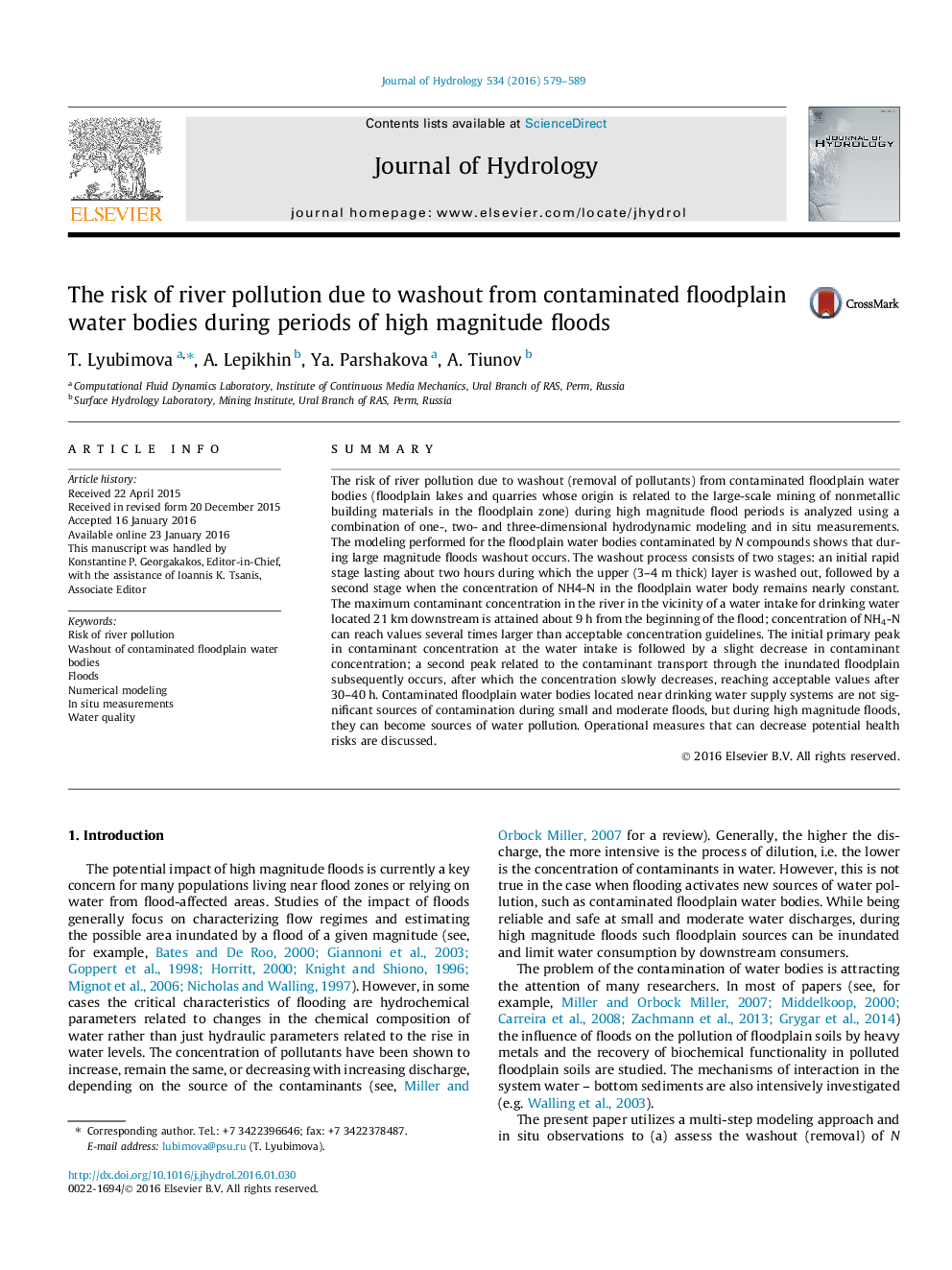| Article ID | Journal | Published Year | Pages | File Type |
|---|---|---|---|---|
| 6410389 | Journal of Hydrology | 2016 | 11 Pages |
â¢The risk of river pollution due to washout of floodplain water bodies is studied.â¢The study is performed numerically using combined approach.â¢Under high floods contaminated floodplain water bodies become a water pollution source.â¢Washout of these bodies may sharply increase contaminant concentration in the river.â¢This create a real danger to downstream water consumers.
SummaryThe risk of river pollution due to washout (removal of pollutants) from contaminated floodplain water bodies (floodplain lakes and quarries whose origin is related to the large-scale mining of nonmetallic building materials in the floodplain zone) during high magnitude flood periods is analyzed using a combination of one-, two- and three-dimensional hydrodynamic modeling and in situ measurements. The modeling performed for the floodplain water bodies contaminated by N compounds shows that during large magnitude floods washout occurs. The washout process consists of two stages: an initial rapid stage lasting about two hours during which the upper (3-4Â m thick) layer is washed out, followed by a second stage when the concentration of NH4-N in the floodplain water body remains nearly constant. The maximum contaminant concentration in the river in the vicinity of a water intake for drinking water located 21Â km downstream is attained about 9Â h from the beginning of the flood; concentration of NH4-N can reach values several times larger than acceptable concentration guidelines. The initial primary peak in contaminant concentration at the water intake is followed by a slight decrease in contaminant concentration; a second peak related to the contaminant transport through the inundated floodplain subsequently occurs, after which the concentration slowly decreases, reaching acceptable values after 30-40Â h. Contaminated floodplain water bodies located near drinking water supply systems are not significant sources of contamination during small and moderate floods, but during high magnitude floods, they can become sources of water pollution. Operational measures that can decrease potential health risks are discussed.
